by Mark Schniepp
November 1, 2020
The Second Wave has Arrived
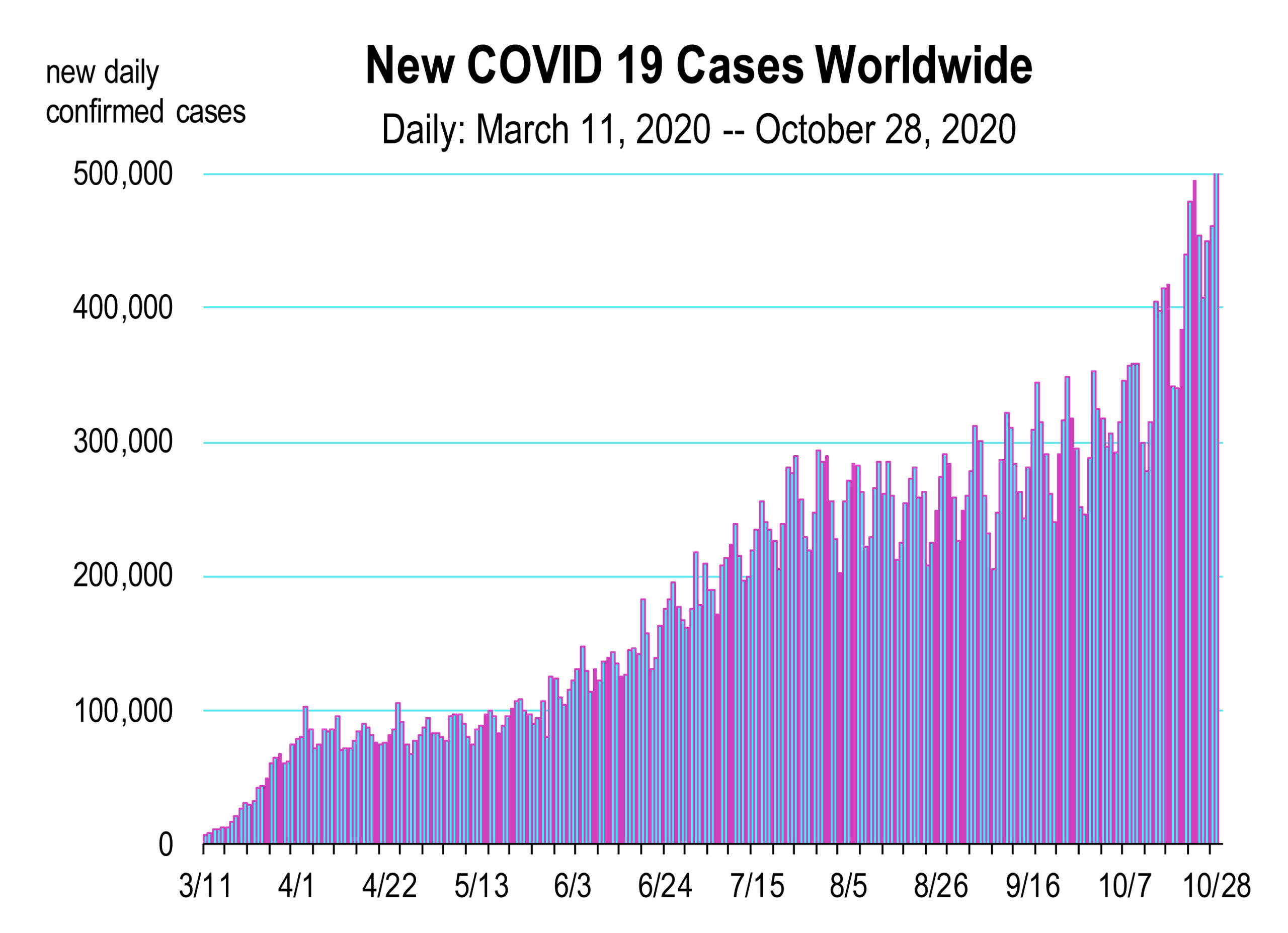 There is now a resurgence of coronavirus cases in the world, especially in Europe where a “second wave” of the virus is raging. Adjusted for population, the number of new infections in the EU and the U.K. has now overtaken the United States.
There is now a resurgence of coronavirus cases in the world, especially in Europe where a “second wave” of the virus is raging. Adjusted for population, the number of new infections in the EU and the U.K. has now overtaken the United States.
So despite the onset of dissenting policies, such as the Great Barrington Declaration, European countries are reinstating mobility restrictions, limiting public gatherings, instituting curfews, closing bars early, and prohibiting travel. Italy has imposed a 6 PM curfew on restaurants and bars and shut down cultural and recreational venues. All non-essential movement in and out of Madrid is banned. France has reinstated a nationwide lockdown, and Germany has closed restaurants, bars, gyms, concerts and theatres for a month.
The infection rate for Spain, France, Italy, Germany, the U.K, and many Eastern European countries exceeds the initial surge that prevailed last March and April. Positive case numbers may now appear higher, simply because the sharp increases in testing capacity are identifying many more cases than during the initial surge in March and April. However, this 2nd wave pattern is typical of influenza and coronaviruses to arrive in fall and peak in winter. Furthermore, hospitalizations are rising in most countries.
A new round of gathering and distancing rules and limitations will lead to more economic trauma in Europe. The U.S. is bracing for higher case surges than what has already occurred, particularly in the mid-western states where the weather has chased people inside.
The 2nd wave inevitably will lead to restricted supply: that is, limitations on how businesses can provide goods and services. When that occurs, there can only be limited improvement in the economy which appears certain for the remainder of this calendar year.
Meaningful Indications of Improvement
- Though now rising in other Midwestern states, coronavirus cases remain relatively contained in California so far. The 2nd wave has not yet hit. Many California counties have advanced from the purple tier to the red tier, and a few have climbed into the coveted orange tier recently. This enables more of their regional economies to relax restrictions. For example: a restaurant will be able to serve twice as many parties inside.
- Public transportation usage, while slightly improved, remains a fraction of its pre-pandemic level. Airline traffic also remains depressed, though U.S. airport security checkpoints continuously process more travelers every week.
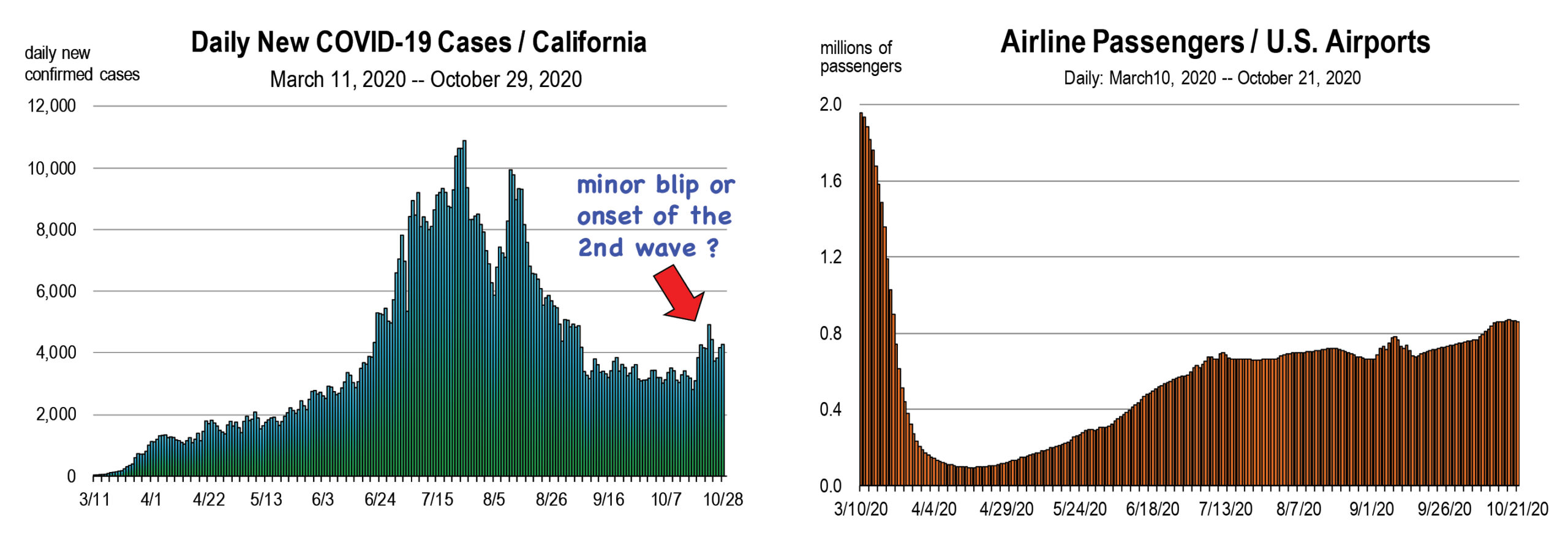
- Retail markets have largely recovered. For the entire country, sales are above where they started the year and year-ago growth actually exceeds early-2020 rates. People buying new and used cars is a major factor. Consumer spending appears to be more durable than originally expected despite the absence of any new government support.
- Record-low mortgage rates are supporting housing demand, and existing home sales and selling values have more than recovered. In fact, sales in August and September substantially exceeded sales in August and September of 2019, and selling values for homes in most California counties have recently soared, eclipsing their previous record highs.
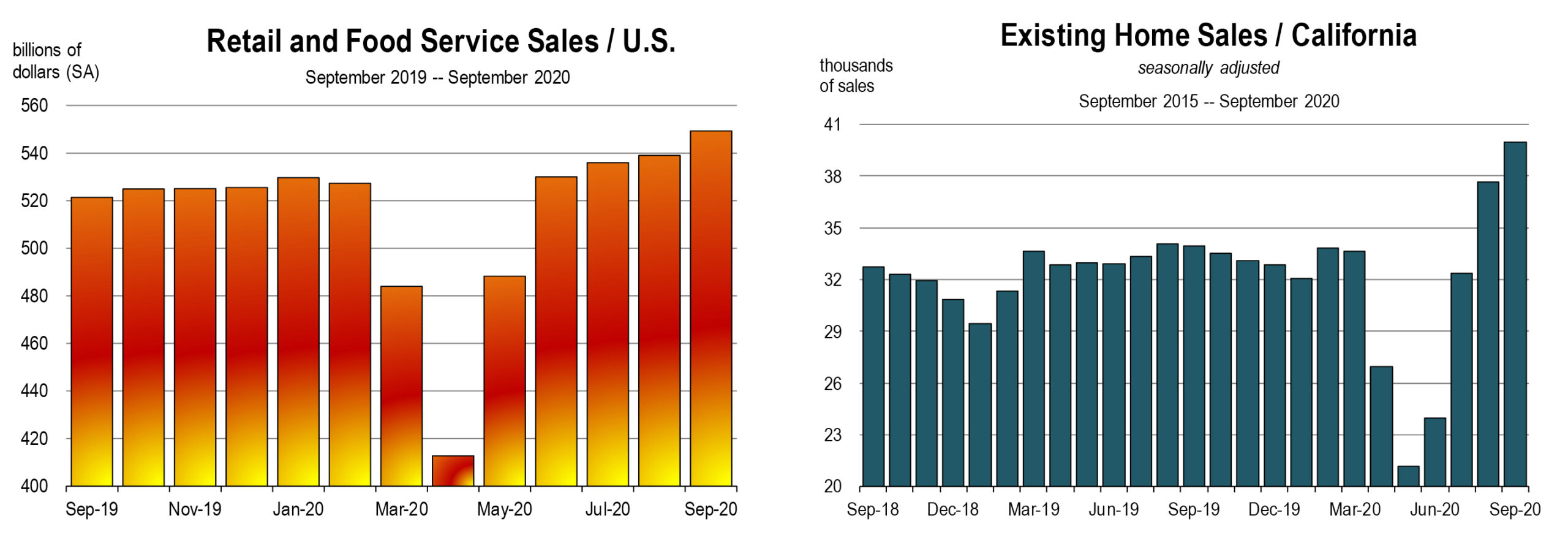
- The broad financial market indices have been moving close to historical highs. Why? Because investor behavior mirrors the upbeat responses by CEOs responding to sentiment surveys. More than half of respondents say economic conditions will be better in their own countries in 6 months. The 30 percent who said conditions will worsen is the smallest share of respondents all year to expect declining conditions.1
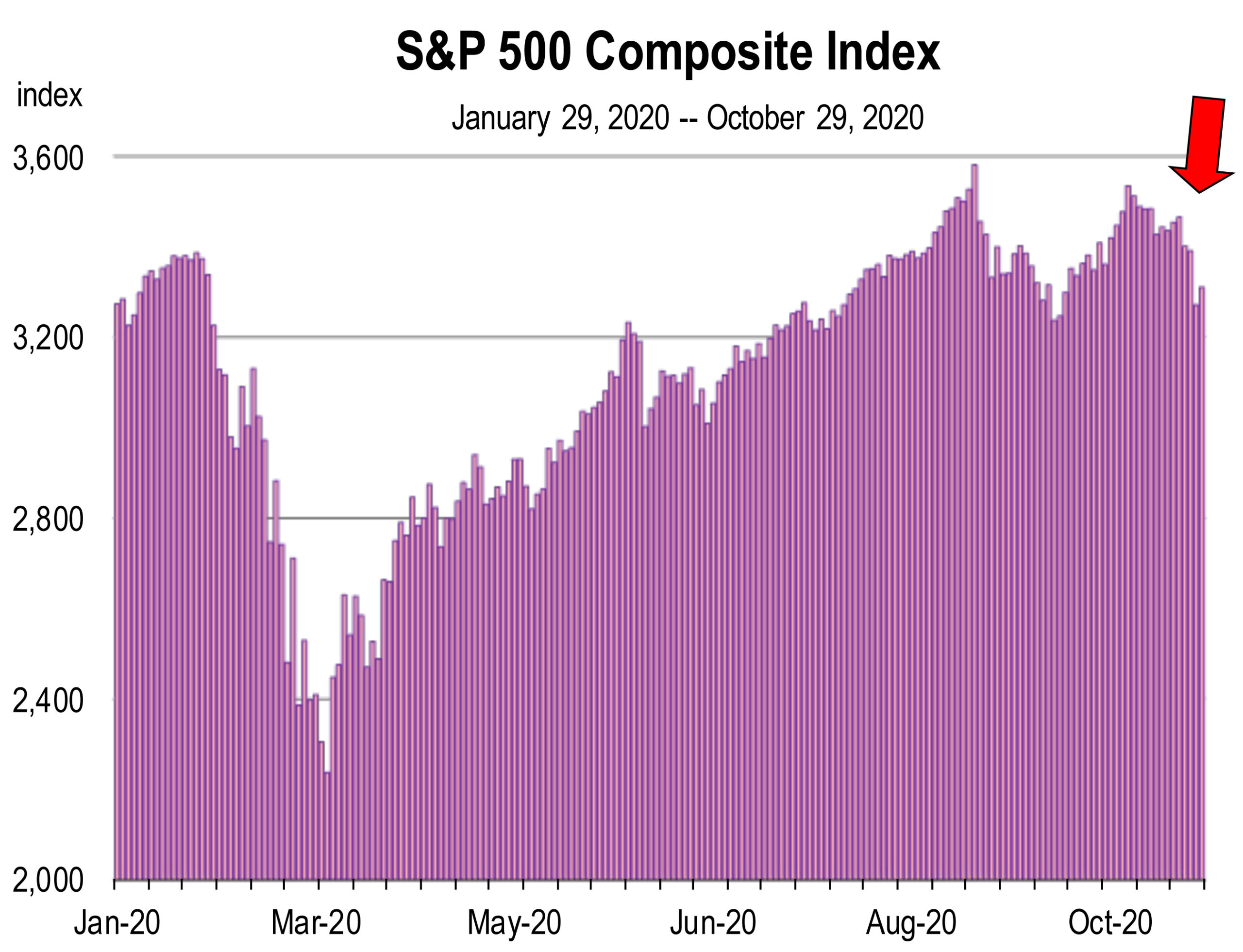 Third quarter real GDP soared 33.1 percent at an annual rate following the 31.4 percent decline in the second quarter. The gain reversed about 75 percent of the prior decline.
Third quarter real GDP soared 33.1 percent at an annual rate following the 31.4 percent decline in the second quarter. The gain reversed about 75 percent of the prior decline.
- States are opening: Most states continue to progress their business activity opening plans despite marginally rising cases this fall. Missouri, Alaska, Florida, Wisconsin and Tennessee have fully opened.
- Loser economic restrictions around the nation for now have enabled more workers to be rehired. Six months ago during the first week in May, 25 million workers received unemployment benefits for either being laid off or having their work hours sharply reduced. Today, total claimants for unemployment insurance have dropped to 8.2 million.
- The Dodgers won the world series for the first time in 32 years. You may not consider this an improvement if you are from or live in Florida.

Employment has Improved but the Onset of a 2nd Wave Threatens the Streak
Rehiring has resulted in the restoration of just over 50 percent of all jobs lost in the March-April period, and there have now been 5 consecutive months of new job creation. Furthermore, in California, there are many technology sectors that have fully restored employment, and the construction workforce has been restored to 94 percent of its February 2020 peak.
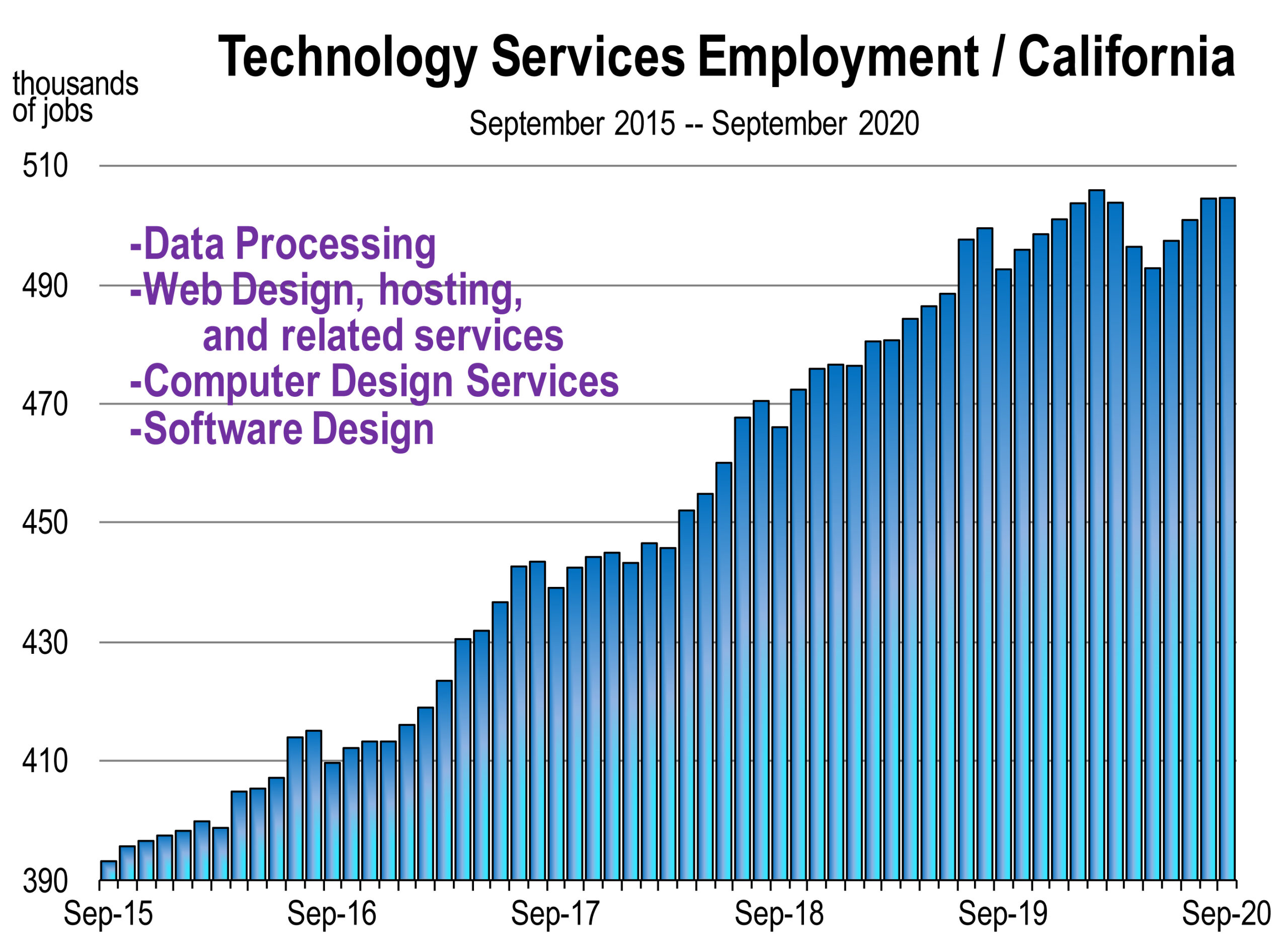
There are headwinds however. With airline demand depressed, the major airlines have announced further layoffs in October. With no plan to reopen Disneyland, Disney announced 28,000 potential layoffs of domestic employees in October. There is also the unwinding of temporary jobs for the decennial Census by the federal government, and there will likely be subdued hiring for the holiday shopping season, which starts now.
We are also concerned that chillier temperatures in November and December will curb outdoor dining and threaten another wave of job cuts. Grocery stores, meal delivery services and take-out will surge again, at the expense of eating out.
If the 2nd wave arrives in California, new restrictions may be reinstated, slowing economic progress further and yes, jeopardizing the improvements that have been achieved to date.
Unless or until we see more relief and stimulus from fiscal policy and better therapeutics and the much heralded vaccine, the economy will recover selectively, and only marginal improvement should be expected.
1 McKinsey Global Survey, September 2020, The coronavirus effect on global economic sentiment. Executives report increasingly upbeat expectations for profitability and consumer demand for their products, between May and September.
The California Economic Forecast is an economic consulting firm that produces commentary and analysis on the U.S. and California economies. The firm specializes in economic forecasts and economic impact studies, and is available to make timely, compelling, informative and entertaining economic presentations to large or small groups.



